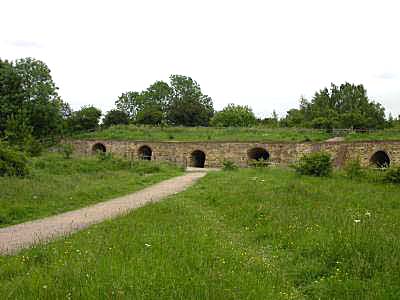
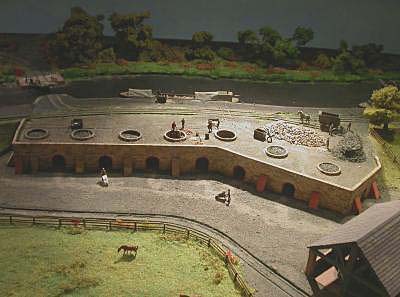
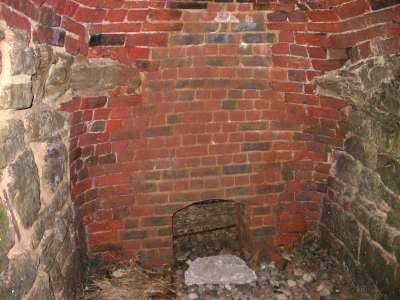
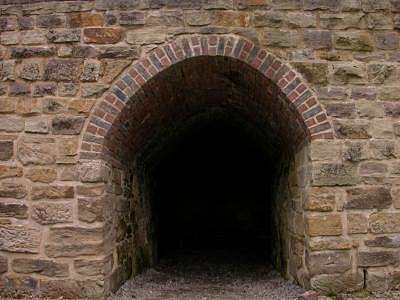
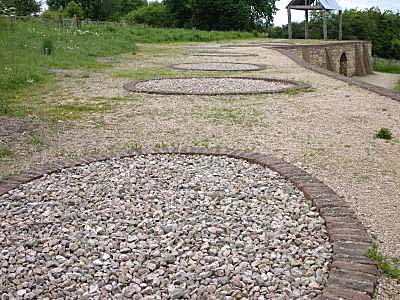
| Location | Moira Limekilns |
| County | Leicestershire |
| Grid Reference | SK 313150 |
| Date of visit | 5 June 2004 |
 |
 |
|
 |
||
|
|
||
 |
||
 |
| Limeburning at Moira probably developed as a result of the enclosure of
the nearby 2500 acre Ashby Woulds in 1800. The clay soils here would be
improved by liming and a demand of 1500 tons per annum would not be unreasonable
estimate for the Woulds alone. The limeburning also provided a market for
slack coal from the local collieries. Stone was supplied by the Ashby Canal
and tramways system from Breedon and Ticknall via the basin at Willesley.
The initial single kiln on the site could have been erected around 1804 and initially used to provide lime for mortar in the construction of the nearby blast furnace. Four additional kilns were built to the east side of the original one when a separate limeworks was established. The draw tunnels served two kiln bowls each via a cross passage at the inner end of each. In 1812 the value of lime produced was £636 14s 11d, which equates to 1273 tons at 10s per ton. Between 1826 and 1837 two further kilns were added on the west side of the line, set at an angle to the other kilns. These kilns have draw tunnels of larger proportions than those built earlier. By the late 1840's the demand for agricultural lime in the area had declined significantly and it is thought that the limeworks had ceased production by 1850 on the closure of the Ashby to Willesley Basin tramway, which had been the main route for limestone to be burned. |
Back to Leicestershire limekilns index
© David Kitching 2005
Page last updated 1.1.2005